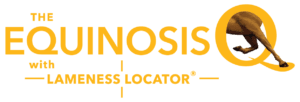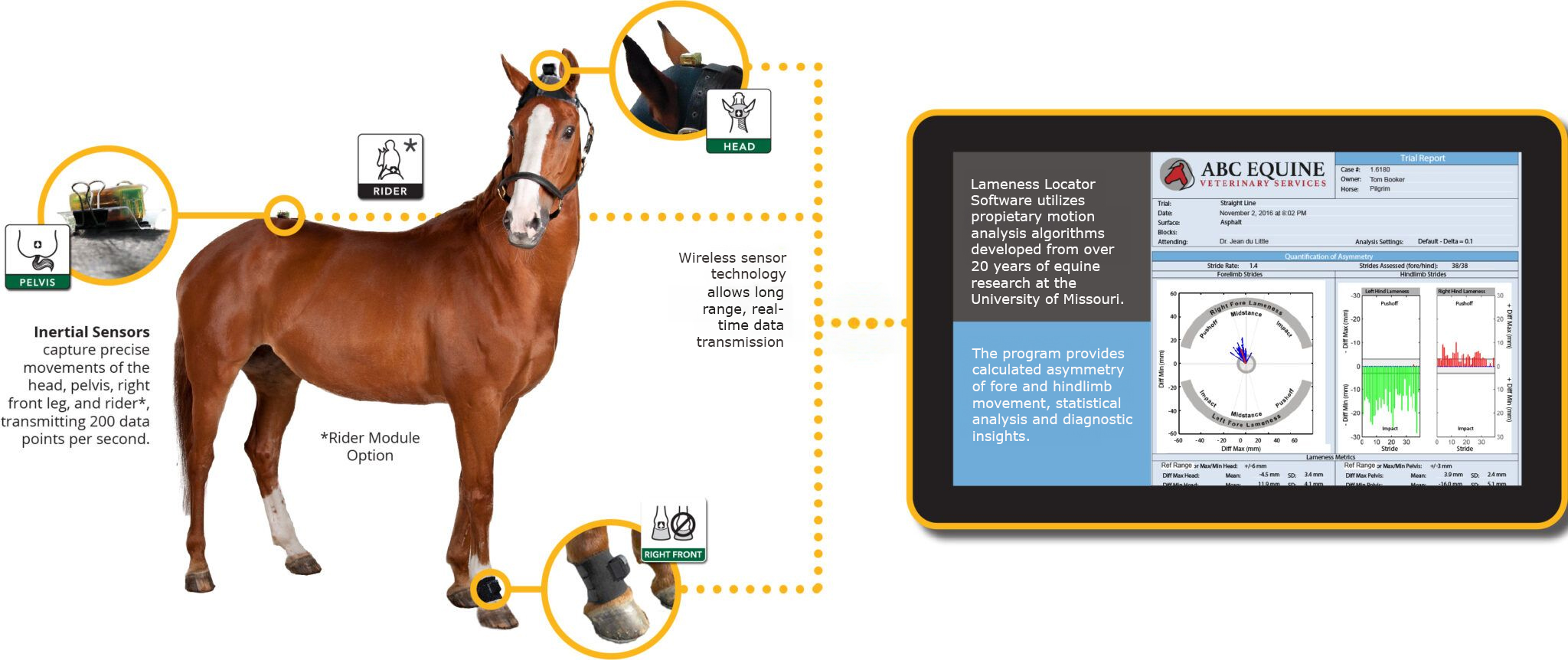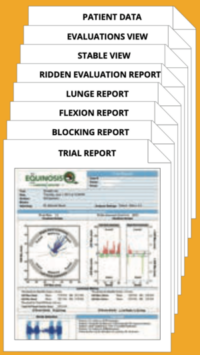The Biomechanics of Multiple Limb Lameness: Separating Secondary from Compensatory
…
read more
Quantify equine lameness with wireless sensors that track horse movement accurately to less than 1 millimeter.
Proprietary algorithms, based on decades of equine research, compute precise lameness metrics the human eye can’t see.
*The Equinosis Q with Lameness Locator® is sold only to licensed registered veterinarians. The Equinosis Q is a sophisticated medical diagnostic tool. Analytical output must be interpreted by a licensed veterinarian skilled in equine lameness evaluations and trained in the use of this equipment. The Q should only be used in conjunction with a complete veterinary examination to determine the clinical significance of measurements. Attempts to use or interpret Q results in clinical cases without such examination are discouraged./em>

Whether diagnosing subtle performance issues or guiding recovery to pre-injury baseline, lameness measurement provides data your eye can’t see.
Similar to a microscope or telescope, veterinarians can use the Q’s inertial sensors to quantify
equine lameness and measure motion with superior resolution.
Horses with painful limbs shift biomechanical loads to less painful limbs. Regardless of the mechanism a particular horse will use to shift load, the result can be measured by changes to the horse’s natural symmetry. The Q measures asymmetry with remarkable accuracy.
With 10 times more sensitivity than the human eye, and sophisticated algorithms based on decades of veterinary research, the Q quantifies motion asymmetries directly associated with decreased weight bearing.


If you have any questions or are interested in an Equinosis Q for your practice, send us a message and we will be happy to help!
Request InfoSubtle changes in symmetry of movement can be missed due to the limited temporal and spatial resolution of the human eye. Equinosis Q inertial sensors sample 10x faster (200Hz) than the human eye, allowing for detectionmeasurement of very subtle asymmetries in head and pelvic movement. Proprietary software analysis, with decades of validation behind it, provides results with submillimeter accuracy.
Multiple limb involvement, including compensatory and secondary lameness, can complicate what is observed. The distribution of lameness (fore and hind, ipsilateral or contralateral) and the timing of hindlimb lameness (impact, pushoff or both) can be predictive of the primarily lame limb. The software evaluates for these known & studied compensatory lameness patterns and may suggest a primary limb when both a fore and hindlimb lameness is measured.
Objective quantification of change from diagnostic analgesia enables the veterinarian to more precisely evaluate and document improvement. Sequential evaluations provide objective information on response to therapies, improvement during a rehabilitation process, or monitoring a horse’s baseline through a competition season. Objective measures provide more accurate assessments within an exam, over serial exams, and between veterinarians evaluating the same horse. The added information also facilitates communication with your client.
The Q is designed to provide real-time results as the clinician is working through their moving examination, without slowing them down. Sensors can be applied in as little as 60 seconds. View a complete instrumentation.
Two straight line collections should be performed to confirm measurements are stable (unstable lameness is not uncommon and can confound the evaluation both objectively and subjectively). Data collections and analyses can be conducted every time the clinician trots the horse during the exam (e.g. straight line, lunge, flexion, post blocks…). Data collection is in real time and the results are produced in 5 to 10 seconds for each trial.
The analysis informs the veterinarian of asymmetries in vertical head and pelvic positions between right and left halves of stride associated with equine lameness. It indicates which limb or limbs are exhibiting decreased load, the amplitude of head (forelimb) and pelvis (hindlimb) asymmetry, and lastly, the timing of the lameness. For instance, is it a lameness that is primarily “felt” by the horse at impact, mid-stance or push off? The analysis is supplied in a single page report, providing an overall qualitative assessment in a graphical stride plot diagram, as well as mean and standard deviation calculations of head and pelvic movement asymmetry over the course of the collection. A limb-by-limb auto-interpretation of the data is also available to the clinician.
Additional comparison report functionality and clinical interpretation guidance is available for lunging, flexions, blocking, rechecks, and ridden evaluations.
Q reference ranges were determined experimentally using a relatively narrowly-controlled environment, in a heterogeneous sample consisting of horses of many ages, sizes, breeds, and use, with subjective evaluations for lameness ranging from moderate (grade 3 on the AAEP scale) to no lameness (grade 0 on the AAEP scale), taking care to obtain data with low stride-to-stride and trial-to-trial variability. The reference ranges were derived from the 95% confidence intervals of the inertial sensor measures predicted when the mean subjective AAEP score from at least 3 veterinary evaluations was 0. However, lameness, like many clinical signs, is not binary. Horses may have natural asymmetry that is not attributable to pathology or a painful condition. It is important to note that these reference ranges are not meant to be considered as the demarcation between sound and unsound.
Yes, with a few considerations.
Yes; however, data collection for both pre- and post-flexion should consist of a shorter trial (8-10) strides so that the mean measurement is not “diluted” by a collection of 25 strides where the horse may have warmed out of the response. Q software allows for the use of the baseline trial to be used in which the first 8 strides are selected for comparison against a post-flexion collection of the same number.
Yes, which is why the software accommodates for size programmatically. It is not really the size of the horse that matters but rather its expected vertical movement (it’s normal up and down movement). For instance, five mm of asymmetric pelvic movement in a draft horse or big bouncy Warmblood is likely not as significant as five mm of asymmetric pelvic movement in a Shetland pony, or a horse with very little expected vertical movement. The software evaluates the expected vertical torso movement for the individual horse and applies a correction factor in the analysis.
The Q can be used in just about any environment where a horse can be trotted for approximately 75-90 feet. A firm, flat surface provides the least variable data, however horses can be jogged on grass, dirt, gravel, or arena surfaces. The Q can be used in all weather conditions, including hot or cold temperatures (see tablet operating temperature specs) and the rain. The inertial sensors are water resistant, sealed to prevent water penetration. The Classic Q system includes a ruggedized tablet designed for rain, wind and dust resistance. The Lite Q system includes a MS Surface Pro tablet that should be shielded from the rain.
*The sensors cannot be submerged in water such as in an underwater treadmill.
On average, the sensor battery charge lasts about 3-4 hours of continuous data collection. Factoring the amount of non-collection time in a typical exam (palpating, blocking, etc), a new sensor provides a full day of use for most users on a single charge. Having a second set of sensors is ideal to avoid having to charge the sensors between cases. Battery deterioration over time is expected and will hasten loss of charge time.
Don’t take our word for it. See how others view the Equinosis Q as an integral part of their lameness, rehabilitation, equine sports medicine, and wellness care.
Testimonials